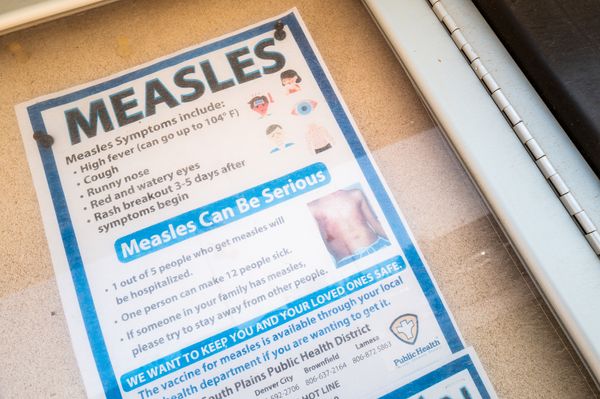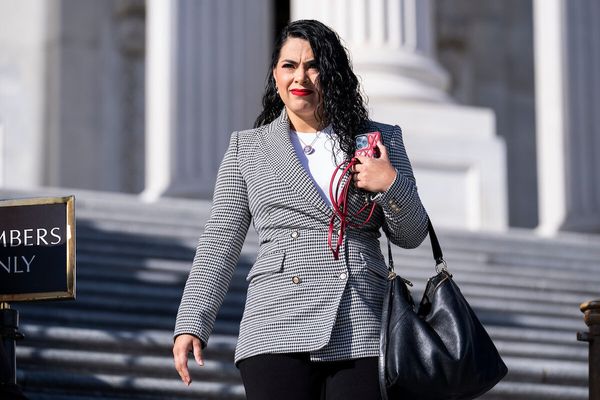
Hurricane Beryl was unusual in many ways before it struck Texas on 8 July – it sped up more than 35mph in a 24-hour period twice, and it became the first category 5 storm to form as early as it did in the hurricane season. And as the world increasingly warms because of the burning of fossil fuels, research suggests that storms like Hurricane Beryl will become more common – concerning coastal residents who will have less time to evacuate.
While residents are more likely to leave when directed to do so by their local government, emergency managers are shying away from enacting community-wide mandatory evacuations because of how much time they take to put in place.
After 2021’s Hurricane Ida strengthened 60mph in a day, the New Orleans mayor, LaToya Cantrell, said there wasn’t enough time to reroute all traffic out of the city and organize a municipally assisted evacuation for those without transportation. Emergency managers in Houston similarly expressed concern that calling for a mandatory evacuation on such short notice could leave drivers stranded in the storm’s path.
In fact, a botched evacuation of more than 2.5 million people along the Texas coast caused more deaths in the state during Hurricane Rita in 2005 than the storm itself did.
Hurricane forecasters play a large role in helping people to decide whether to go. While the storms of today are generally unlike any before, forecasting has gotten better not only at predicting where tropical storms might go – but also which ones will become major hurricanes, said Jason Sippel, a meteorologist with the National Oceanic and Atmospheric Administration (Noaa)’s hurricane research division. Sippel’s job during Hurricane Beryl was to coordinate plane crews to fly into the storm to gather data. The crews then sent data to forecasters in real time, essentially giving them a CT scan of the storm.
But even before hurricane hunters entered the storm, forecasters saw indications that Beryl would rapidly intensify into a major hurricane. On 28 June, while still a tropical depression, forecasters predicted that it would become a category 2 hurricane. The unprecedented nature of a major storm forming so early in the season might have made forecasters hold back in predicting an even stronger storm at that time, Sippel said. “A lot happened on that very first day,” he said. “But there was always a warning. There were just questions on how strong it’s going to be and how rapidly it’s going to intensify.”
In the past 15 years, the accuracy of prediction models for how strong a storm will get has improved by 50%. That means they have cut errors down by half. Forecasts of the track of the storm have been improving for a long time, but storm intensity is harder to predict. “We’ve gotten a lot better at it,” he said. “And I absolutely believe we will get better at it.”
But until then, coastal residents are left with little to help them solve the complicated math over when to leave or stay for a storm. Sippel understands because he has done it himself.
A few months after Sippel moved his family to Miami in 2017, forecasters projected that Hurricane Irma would hit the Florida city as a category 4 storm. He did the math: he had bought a home as far away from the beach as he could, knew that he wasn’t in a flood zone, and had impact-resistant windows. He also wasn’t in a mandatory or voluntary evacuation zone. And so he decided it was safer to stay.
“There’s risks associated with each,” Sippel said. “If you don’t evacuate, you could be without power. If you do evacuate, you could end up running out of gas on the side of the road with thousands of other people.”
Those who are in an evacuation zone should evacuate if they are advised to by authorities, he added.
While evacuations can be dangerous and expensive, staying – often called sheltering in place – poses its own dangers. Texas reported more than 25 heat-related deaths stemming from Beryl, which left nearly 3m homes and businesses without electricity.
Most of the deaths in Louisiana after Ida resulted from prolonged power outages, said Broderick Bagert, an organizer with Together Louisiana, a grassroots network of religious congregations and civic organizations. Without power for air conditioning, at least nine people died from excessive heat – and another 351 were sent to the hospital for heat-related illnesses after the storm.
Portable generator use also led to six carbon monoxide poisoning deaths and 183 hospital visits for carbon monoxide exposure, according to the Louisiana department of health and the National Weather Service. In the past four years, more than 50% of storm-related deaths in Louisiana were caused by heat or carbon monoxide poisoning.
The protracted, widespread power outages inflicted by Ida are why Together New Orleans launched the Community Lighthouse initiative, which aims to put commercial-grade solar power units with batteries on congregations and community buildings in every neighborhood in the state. The idea is that people can go to these lighthouses after a storm passes to cool off and recharge their devices. The project is in the pilot phase, with the 12th solar installation in New Orleans complete and another three under construction.
New Orleans’ government has also listed 15 city-owned properties as potential emergency resource centers during post-storm power outages, but that doesn’t guarantee all of the sites will be open. That’s because the buildings could be damaged in a storm, the director of the city’s office of homeland security and emergency preparedness, Anna Nguyen, told NPR affiliate WWNO.
The city has instead warned locals and visitors that they must fend for themselves for the first 72 hours after a storm, during which New Orleans is likely to be without power or grocery stores.
After Ida, that posture prompted the Community Lighthouse project’s organizers to act, according to pastor and Together New Orleans leader Antoine Batiste. Batiste in 2022 said the project symbolized community members’ decision to stop asking “when are they going to” and instead say “how are we going to”.
The people whom major storms are most likely to endanger are those who depend on power for medical equipment, said Liz Chapoton, the support services coordinator for Team Gleason, which provides assistance to people living with amyotrophic lateral sclerosis – or ALS – in New Orleans.
“Even under the best of circumstances, rarely do our people evacuate,” Chapoton said. “The system is just not set up for this level of catastrophic disability.”
People living with ALS may depend on heavy wheelchairs that maintain their posture, Chapoton added. Those battling other ailments sometimes depend on machines to help them breathe that need power to be recharged.
“It’s not as simple as evacuating,” Chapoton said. “The vehicles need to carry this wheelchair. Our wheelchairs are not something that can be left behind.”
There’s never been as much warning as one would want to prepare for a major hurricane to make landfall, said Lauren Nash of the National Weather Service’s office for New Orleans and Baton Rouge. Few storms become major hurricanes – but those that do tend to intensify quickly. That’s why she recommends that coastal residents prepare for a storm one category higher than the forecast.
“If you’re going to get hit by a 4 or 5 – you’re not going to have a lot of lead time,” she said.







